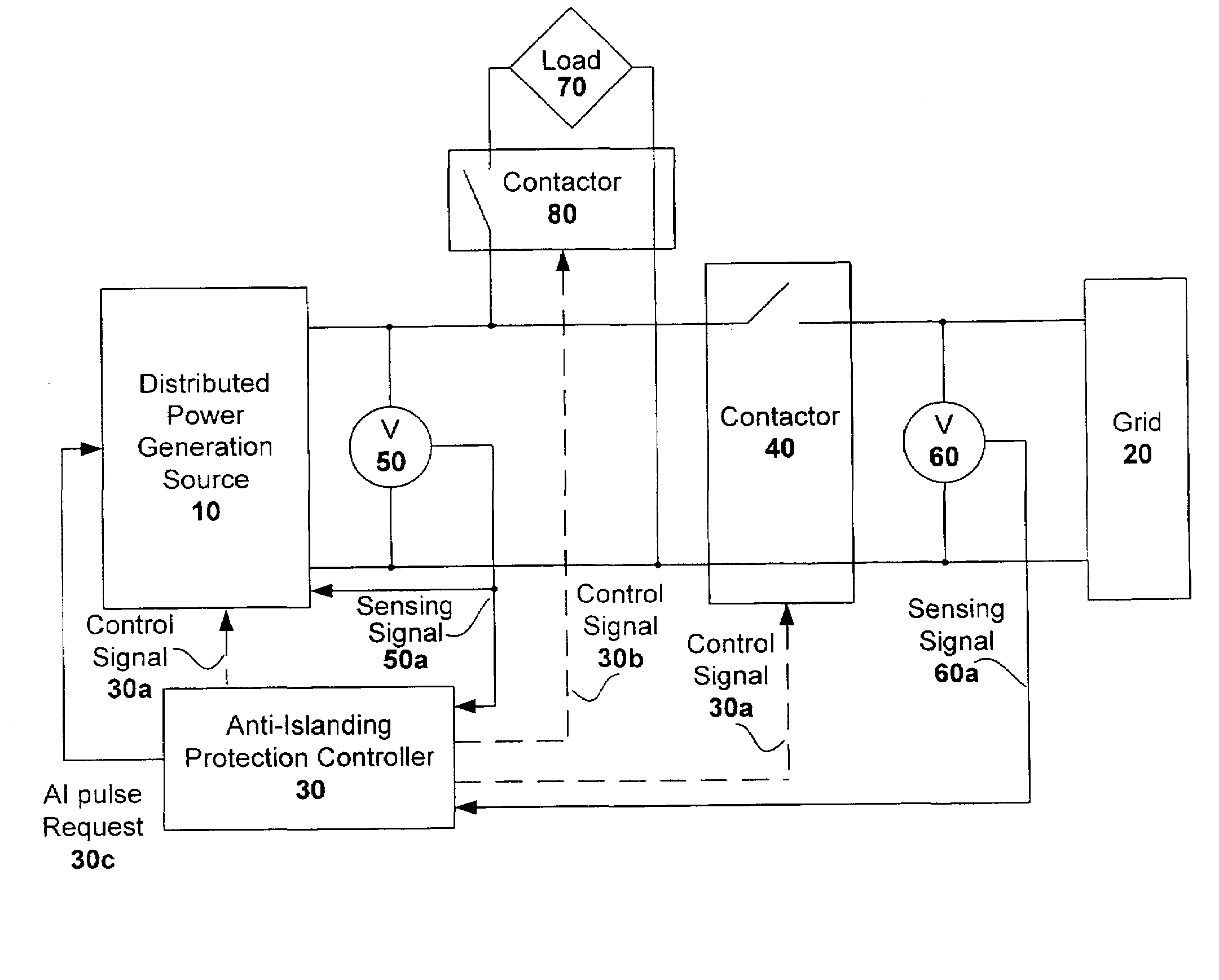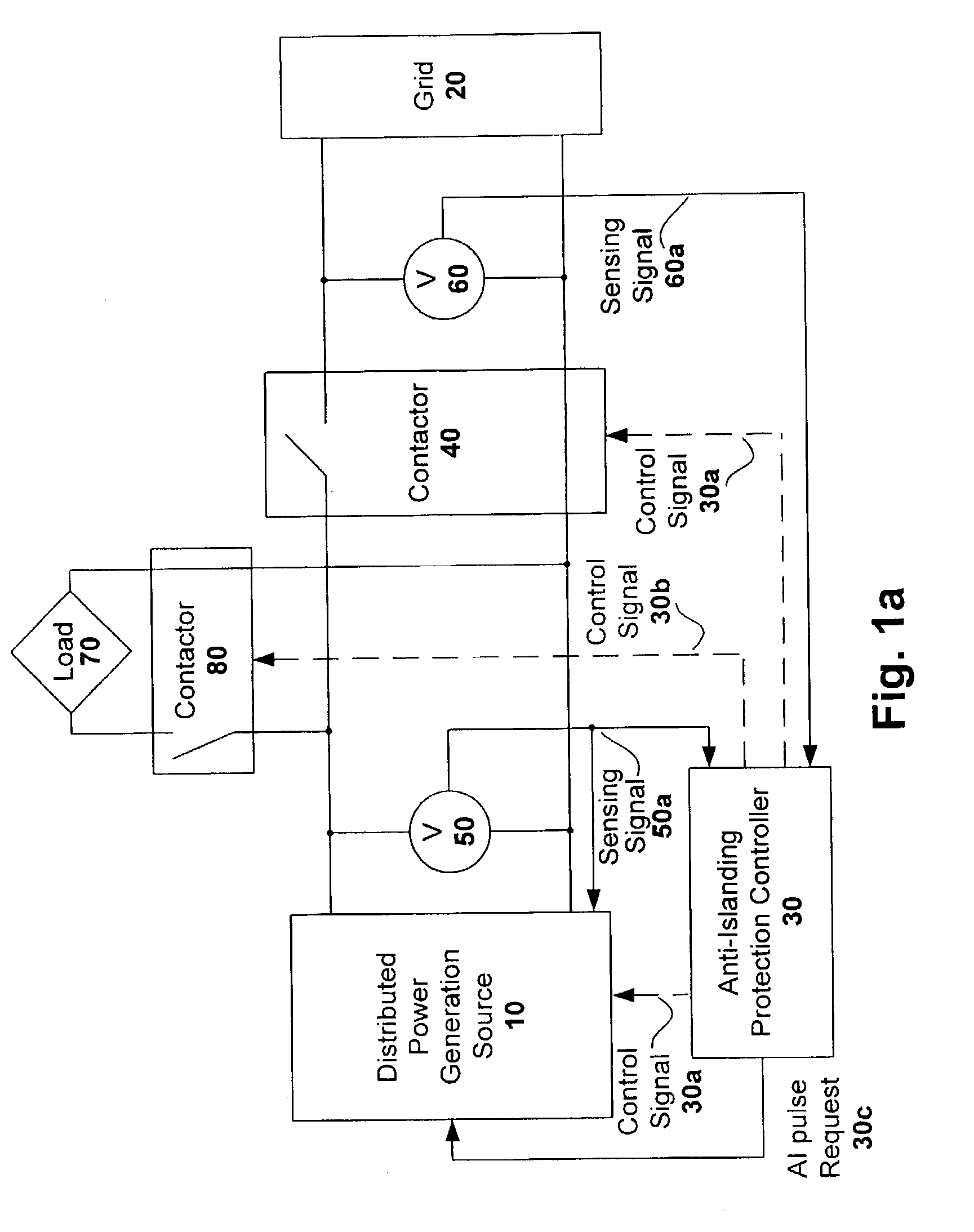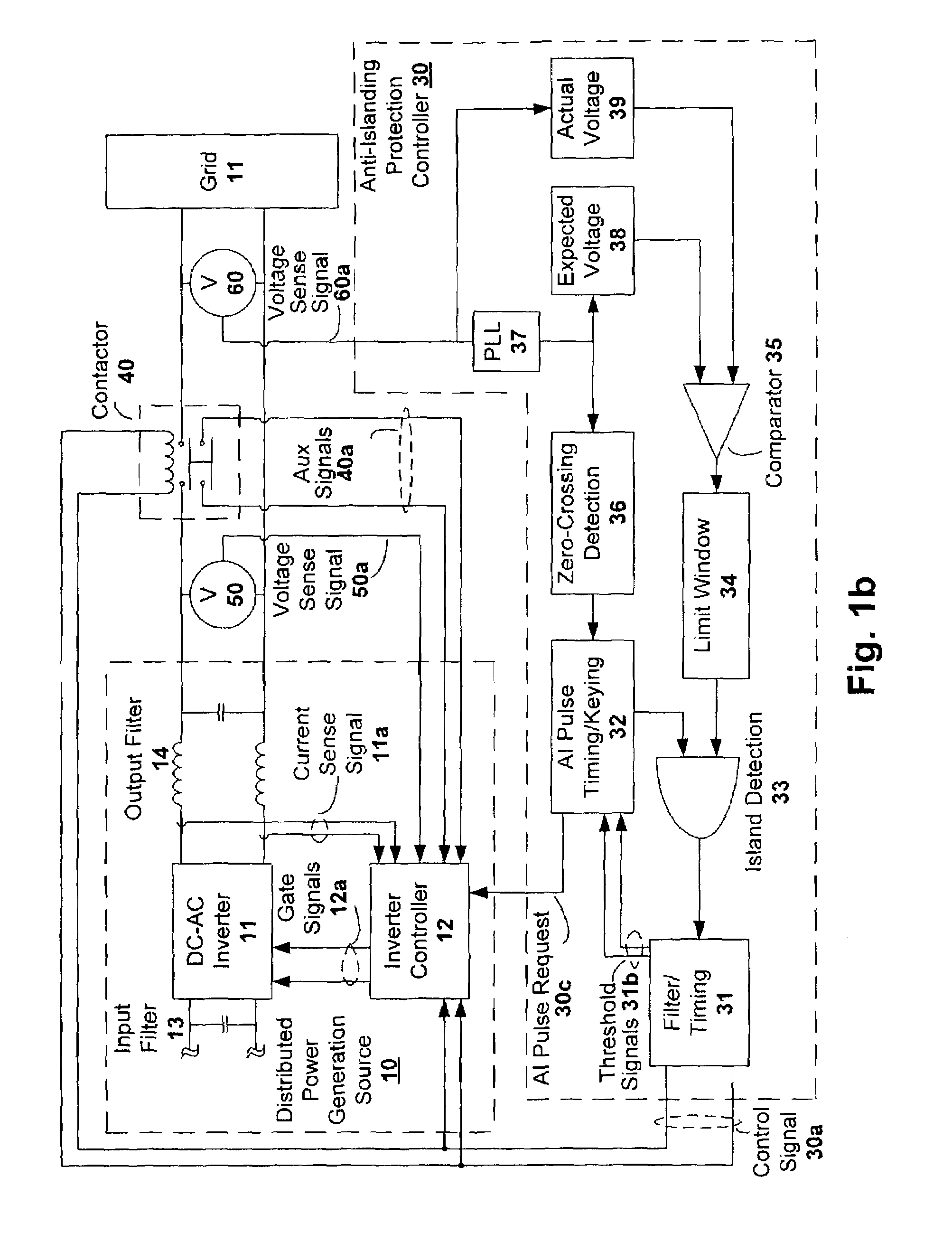Anti-islanding techniques for distributed power generation
a distributed power generation and anti-islanding technology, applied in the field of power distribution, can solve problems such as unsafe conditions, hazard to grid loads, computers and other sensitive electronics, and achieve the effect of preventing the spread of island conditions
- Summary
- Abstract
- Description
- Claims
- Application Information
AI Technical Summary
Problems solved by technology
Method used
Image
Examples
Embodiment Construction
[0028]A grid is typically a combination of loads, utility sources, and distributed power sources that are interconnectable at any point and time via transmission lines. Proposed industry specifications such as the IEEE P1547, IEEE P929, and UL 1741 require that any grid-connected distributed power source must be able to detect an island condition. Evidence of an existing island condition is indicated when the impedance of grid-separated loads match the impedance of local distributed sources such that the voltage and frequency on the island matches emulates that of the disconnected grid. An island is self-supporting, and power is present in that leg of the grid, even when the utility believes that leg has been de-energized.
[0029]Embodiments of the present invention provide a mechanism for reliably detecting the presence of an island situation, even with other distributed power sources connected to the island.
[0030]General Overview
[0031]An underlying principle of the present invention...
PUM
 Login to View More
Login to View More Abstract
Description
Claims
Application Information
 Login to View More
Login to View More - R&D
- Intellectual Property
- Life Sciences
- Materials
- Tech Scout
- Unparalleled Data Quality
- Higher Quality Content
- 60% Fewer Hallucinations
Browse by: Latest US Patents, China's latest patents, Technical Efficacy Thesaurus, Application Domain, Technology Topic, Popular Technical Reports.
© 2025 PatSnap. All rights reserved.Legal|Privacy policy|Modern Slavery Act Transparency Statement|Sitemap|About US| Contact US: help@patsnap.com



